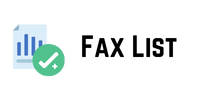Previously, it seemed to me that only rare specialists are hired by cool companies and only top experts are invited to dream projects. But how can I, an ordinary specialist, do this, I did not understand.
The Pros and Cons of Working in a Startup — and Who It’s For
Last year, I set a goal to get into a large corporation, having experience working in agencies and a startup. Spoiler alert: I succeeded. But I realized one very important thing that I had previously ignored: you need to be visible to recruiters. So, in six months, I built up a queue of invitations to interviews.
Having analyzed where HR managers come to b2b email list me from, I made a small shortlist of sources. In addition to the options of being a top and rare specialist, these methods are available, in my opinion, to any candidate. I have arranged all the tools from the most effective to the least.
LinkedIn. This social network generates up to three invitations per week for me. I will share what I did to be more visible to recruiters and hiring managers.
1. Profile design and positioning is what is written next to the last name.
This also includes the sections “General information”, “Work experience”, “Education”, “Skills”, “Licenses and certificates”.
It is important to fill the page as much as possible, to clearly describe your personal brand and what tasks you are able to solve. It will be useful to how to do keyword research for ecommerce include the keywords that you want to be associated with in professional circles: EdTech product manager, B2B marketer, designer team lead, etc.
This is what my profile card looks like
2. Content and publications are what you write and repost on your page.
The essence of maintaining is the same as in other social networks — regularity + benefit. Talk about what you do at work, share your opinion on industry trends. Examples of content can be found in other profiles.
3. Invites and contacts – who you add to your contacts and how many invitations you send.
The more friends (or contacts, as LinkedIn calls them) your profile has, the more visible your account is. If your profile is new, I recommend adding 10-20 contacts a day (even if you don’t know the person, this is the norm on LinkedIn).
Grow your following through the Network section, LinkedIn will recommend users
4. Commenting on other people’s posts, participating in discussions – this is how you interact with other social network participants.
To increase your account visibility, follow relevant betting data profiles and try to participate in discussions under posts. This gives additional reach to your own publications.
Networking. I can’t call myself a sociable person who can come up to someone and introduce myself at a conference. I’m an introvert who enjoys supporting a work conversation online. But even so, I manage to be remembered by my colleagues and receive invitations.
Within the company, there are two types of colleagues with whom I recommend “making friends”:
1. Recruiter. This is the same colleague who can change jobs, and therefore invite you to new projects. Also, my principle is to always respond to recruiters and not forget to return with feedback after the interview.
